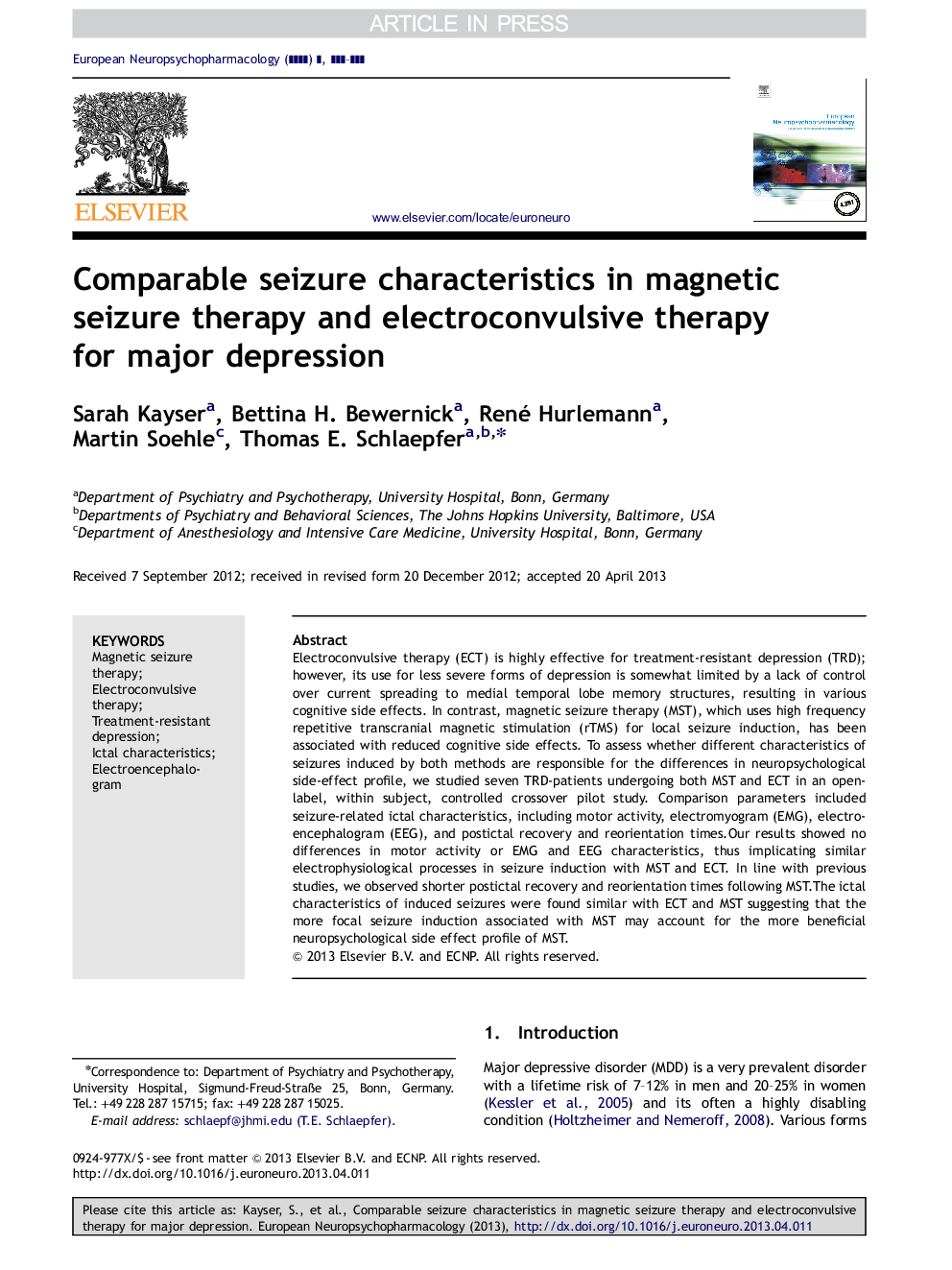| Article ID | Journal | Published Year | Pages | File Type |
|---|---|---|---|---|
| 10298142 | European Neuropsychopharmacology | 2013 | 10 Pages |
Abstract
Electroconvulsive therapy (ECT) is highly effective for treatment-resistant depression (TRD); however, its use for less severe forms of depression is somewhat limited by a lack of control over current spreading to medial temporal lobe memory structures, resulting in various cognitive side effects. In contrast, magnetic seizure therapy (MST), which uses high frequency repetitive transcranial magnetic stimulation (rTMS) for local seizure induction, has been associated with reduced cognitive side effects. To assess whether different characteristics of seizures induced by both methods are responsible for the differences in neuropsychological side-effect profile, we studied seven TRD-patients undergoing both MST and ECT in an open-label, within subject, controlled crossover pilot study. Comparison parameters included seizure-related ictal characteristics, including motor activity, electromyogram (EMG), electroencephalogram (EEG), and postictal recovery and reorientation times.Our results showed no differences in motor activity or EMG and EEG characteristics, thus implicating similar electrophysiological processes in seizure induction with MST and ECT. In line with previous studies, we observed shorter postictal recovery and reorientation times following MST.The ictal characteristics of induced seizures were found similar with ECT and MST suggesting that the more focal seizure induction associated with MST may account for the more beneficial neuropsychological side effect profile of MST.
Keywords
Related Topics
Life Sciences
Neuroscience
Biological Psychiatry
Authors
Sarah Kayser, Bettina H. Bewernick, René Hurlemann, Martin Soehle, Thomas E. Schlaepfer,
